21 Wild Animals in The Bahamas [Wildlife in The Bahamas]
Want to know more about the wildlife in the Bahamas?
Discover 21 wild animals in the Bahamas in this post, as well as interesting facts about them. 🇧🇸
Learn All About Bahamian Animals
Ready to learn all about Bahamian animals?
I’ve always been fascinated by animals, and by how they can be so different from one country to another. In this guide, we’ll focus on the many animals the Bahamas has on the land, in the sky, and under water.
I’ve split the guide into 4 categories:
- Native animals from the Bahamas
- Endangered animals of the Bahamas
- What is the Bahamas national animal?
- How many animals native to the Bahamas?
Let’s dive in right away with our first category!
Native Animals from The Bahamas
The Bahamas is a country located in the West Indies, off the coast of Central America. It is surrounded by the Atlantic Ocean, and its capital city is Nassau, which counts more than 274,000 inhabitants.
An interesting part of the country that I wanted to tackle is its wildlife. In light of that, I have listed the best of it, and I hope you will love learning what animals live in the Bahamas.
Here’s the Bahamas animals list.
1. Feral pig
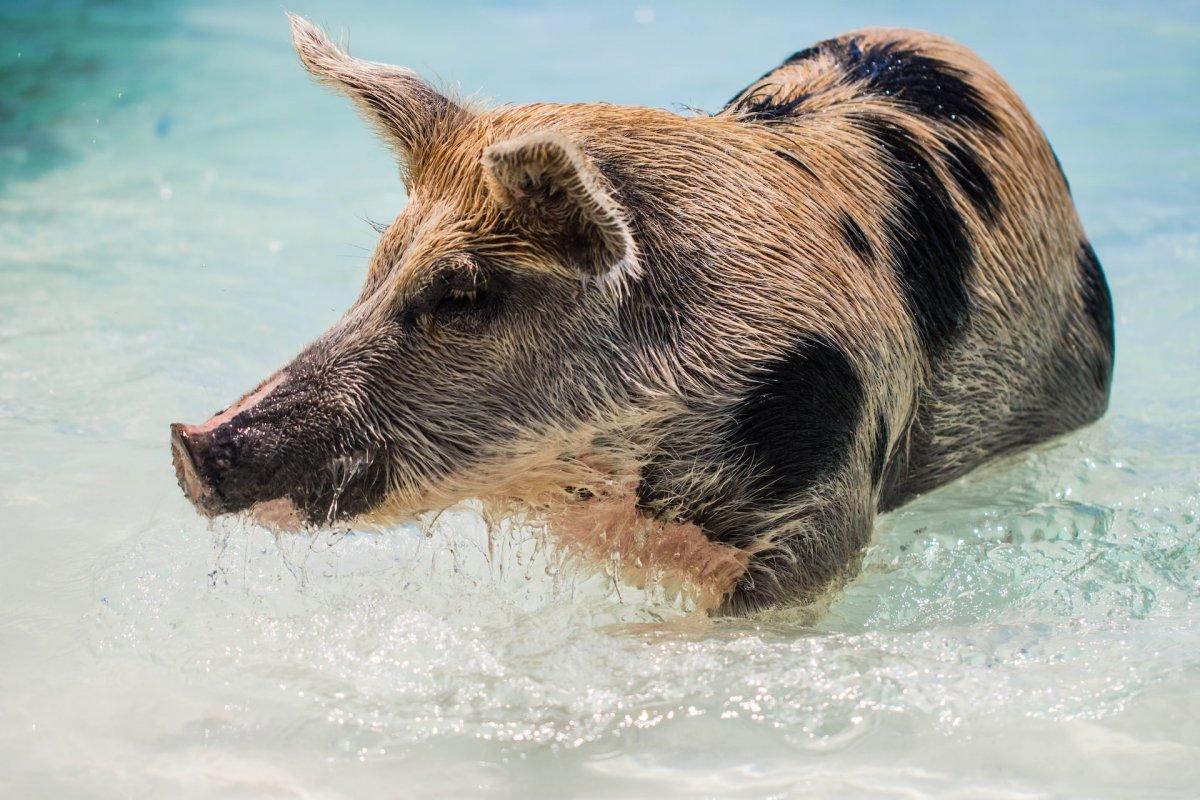
- Name: Feral pig
- Scientific name: Sus scrofa
- Conservation status:
One of the most famous places in the Bahamas is Pig Beach. In case you have not heard of it, it is a beach located on an uninhabited island, in the Exumas. There, you will find a colony of feral pigs that live on the island and that you can swim with.
This beach has become a tourist attraction in the past years, and these pigs are widely known as “the swimming pigs”.
2. Bahamian rock iguana
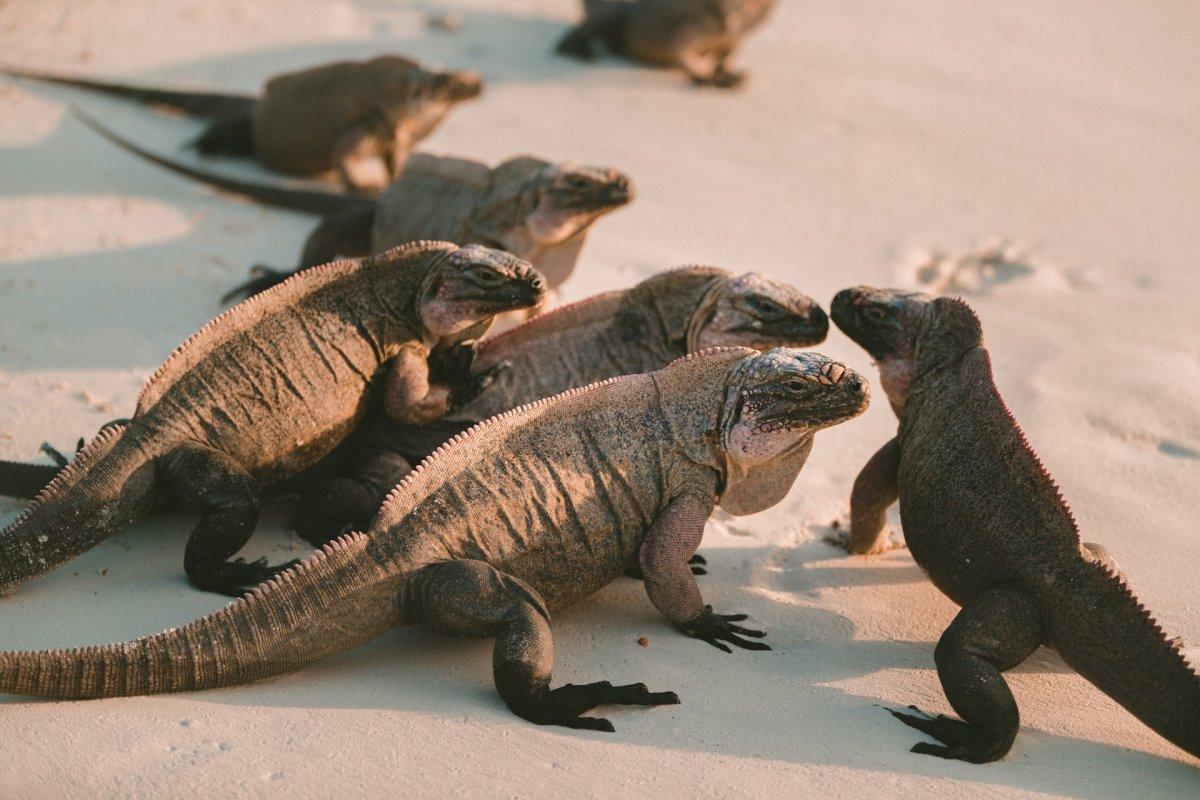
- Name: Bahamian rock iguana
- Scientific name: Cyclura rileyi
- Conservation status:
The Bahamian rock iguana is a species native to three islands in the Bahamas, and its global population is on the decline. Its biggest threat is human development and predation by feral dogs and cats.
It mostly feeds on plant species like flowers, leaves, and fruits, and it is therefore primarily herbivorous. There are now only several hundred Bahamian rock iguanas in the wild, and they are severely endangered.
3. Nurse shark
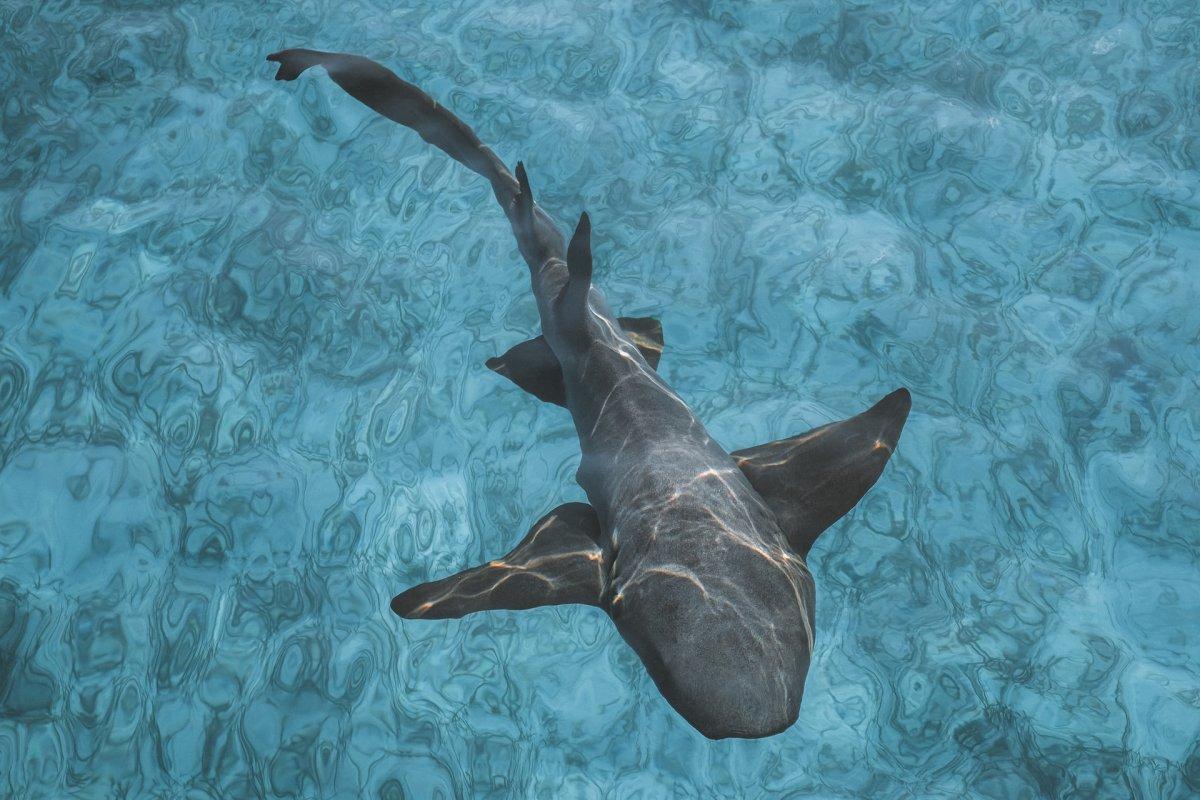
- Name: Nurse shark
- Scientific name: Ginglymostoma cirratum
- Conservation status:
The nurse shark is considered to be of least concern in the Bahamas and in the United States, but it is globally assessed as vulnerable. It is sometimes directly targeted by fisheries, and sometimes fished by accident.
Nurse sharks are very important for shark research, and they tolerate capture and tagging extremely well. While they look inoffensive and slow, they are actually the fourth most human-biting sharks. They can be found throughout most tropical coastal waters of the world.
4. Jamaican petrel
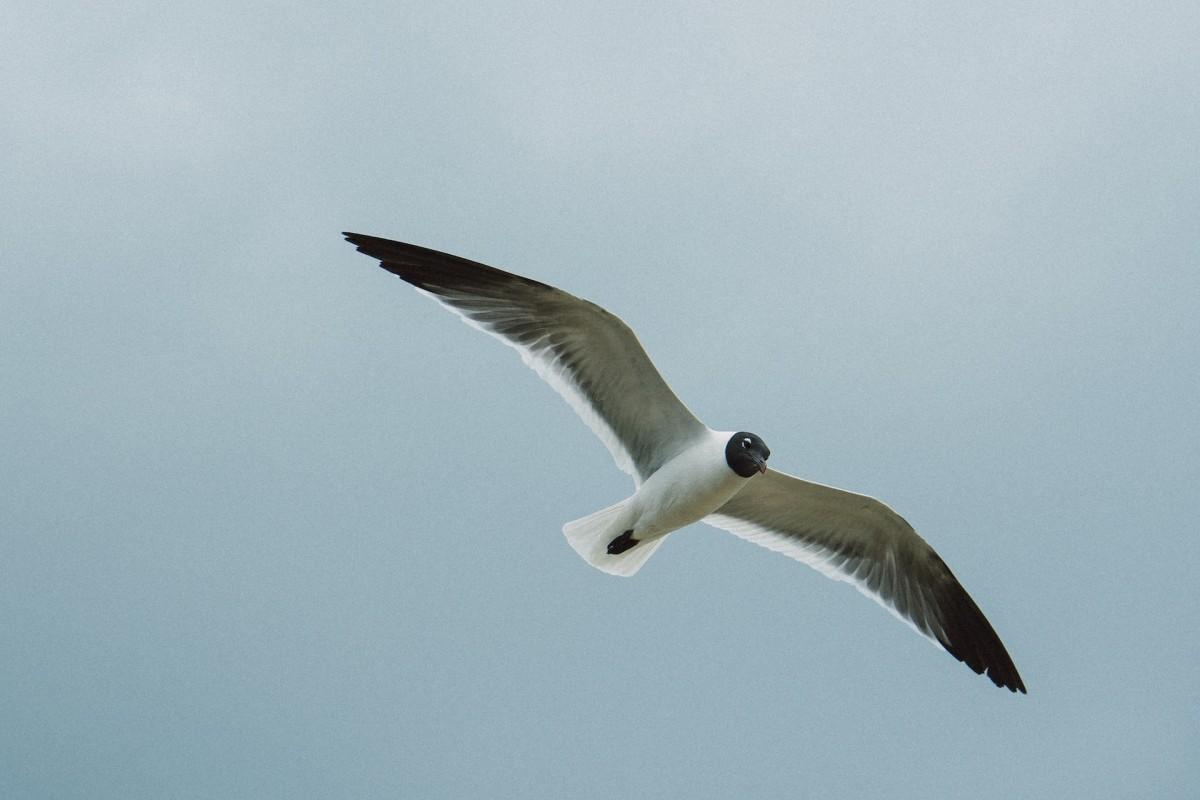
- Name: Jamaican petrel
- Scientific name: Pterodroma caribbaea
- Conservation status:
The Jamaican petrel is a critically endangered species in the Bahamas. It is a small seabird that generally feeds on fish, and resembles a black seagull.
Interestingly enough, the Jamaican petrel might be already extinct. It was last collected in 1879 and searched for without success from 1996 to 2000. It cannot be officially declared extinct yet because it is really hard to record, being a nocturnal bird. Introduced mongooses and rats are the major reason for its probable extinction.
5. Green sea turtle
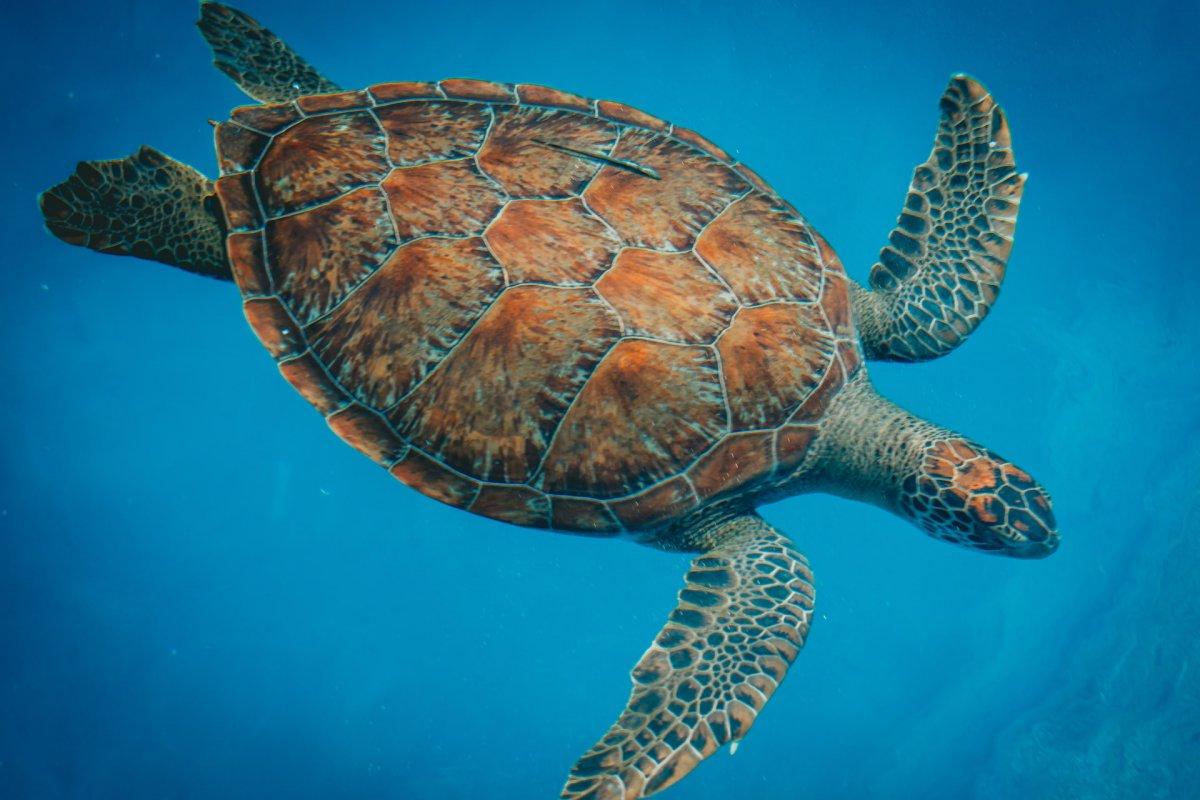
- Name: Green sea turtle
- Scientific name: Chelonia mydas
- Conservation status:
The green sea turtle is a species of large sea turtle that inhabits tropical and subtropical waters around the world and especially loves the Caribbean Sea, where the Bahamas is situated.
It migrates long distances between hatching beaches and feeding grounds and usually chooses uninhabited islands and nests on their beaches. Because of this, many islands around the world are known as “turtle islands”. Green sea turtles are officially protected and it is illegal to harm or kill them, but they are still sadly endangered.
6. Bahama oriole
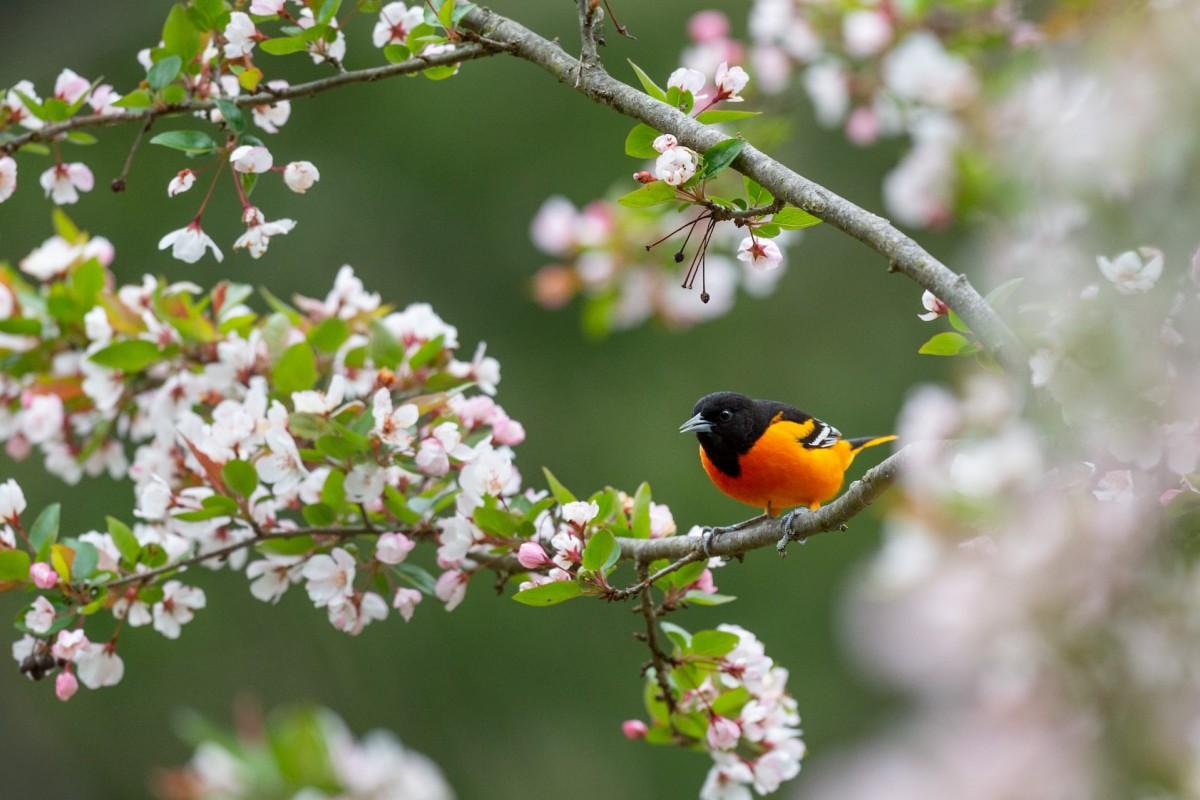
- Name: Bahama oriole
- Scientific name: Icterus northropi
- Conservation status:
The Bahama oriole is a small bird endemic to the Bahamas. Even though it is currently hard to estimate its global population, it is still assessed as critically endangered. This bird is black and yellow with small white markings on its wings and tail.
It used to live on two Bahamian islands, Abaco and Andros, but it became extirpated from Abaco and can now only be found on Andros.
7. Conception Bank silver boa
- Name: Conception Bank silver boa
- Scientific name: Chilabothrus argentum
- Conservation status:
The Conception Bank silver boa is a species of boa described in 2016. It is endemic to the Conception Island Bank in the Bahamas, hence its name. It is named silver boa due to its unique color, and the fact that the first species was discovered in a silver palm.
This species of boa is majorly arboreal and is currently assessed as critically endangered due to the very few species that were found, as well as habitat loss, illegal pet trade, and introduced species.
8. Round-nosed grenadier
- Name: Round-nosed grenadier
- Scientific name: Coryphaenoides rupestris
- Conservation status:
The round-nosed grenadier is a small ray-finned fish, and it is also known as the roundhead rat-tail or the rock grenadier. It is a deep water fish that sometimes reaches over a meter in length. Its name comes from its rounded head with a broad snout.
This grenadier spends the summer in very deep waters while choosing shallower areas for the winter. Its commercial fishing started in the 1960s, and it will become extinct within the next 10 years if this fishing is not controlled soon.
9. Collared peccary
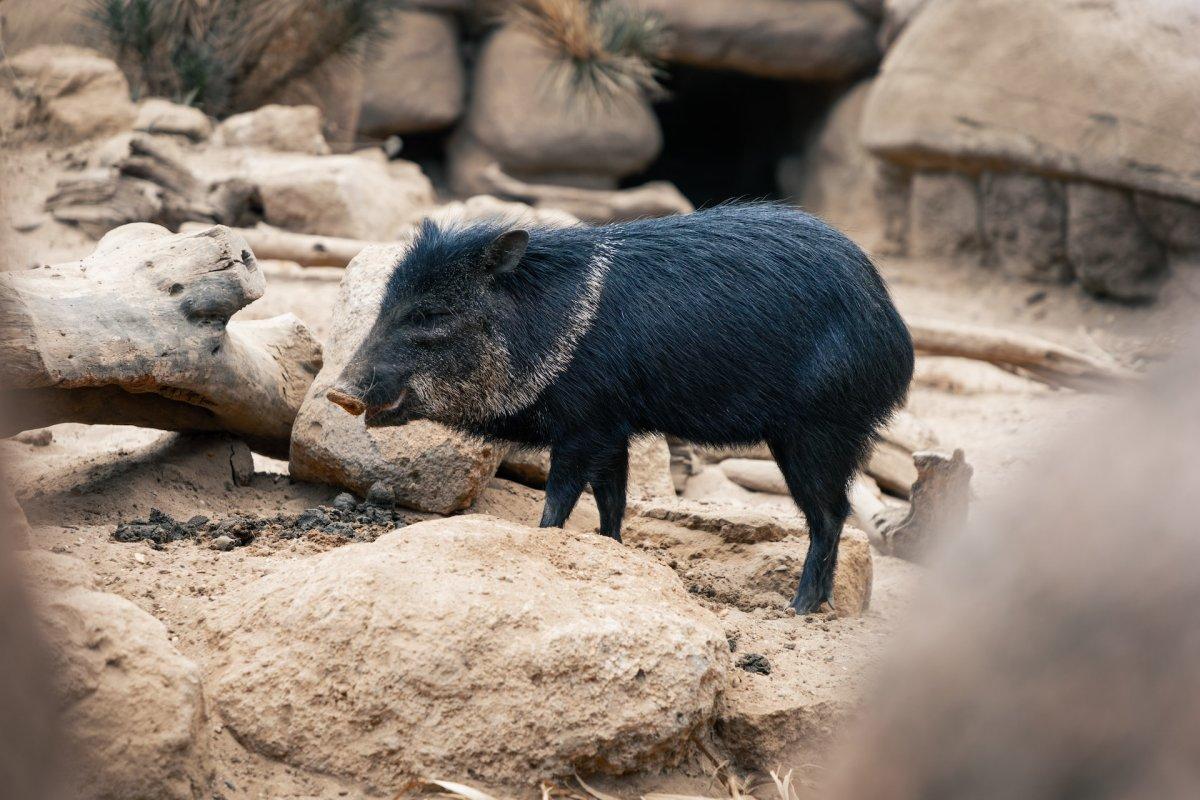
- Name: Collared peccary
- Scientific name: Dicotyles tajacu
- Conservation status:
The collared peccary is a species of mammal that can be found throughout all of the Americas. It is also known as the musk hog, and it has small tusks and slender legs.
This mammal is an herbivore and usually feeds on mesquite beans, fruits, roots, cactus, palm nuts, and other green vegetation. Sometimes, it can also be seen in human areas, eating cultivated crops and ornamental plants. It is a diurnal creature that lives in a group of up to 50 individuals but usually prefers to stay with 5 to 8 other animals.
10. Guppy

- Name: Guppy
- Scientific name: Poecilia reticulata
- Conservation status:
The guppy, or millionfish, or rainbow fish, is one of the most widely distributed tropical fishes on the planet. It is a tiny fish that originates from South America, but that can now be found in most of the world’s tropical waters. They are actually present on every continent (except for Antarctica, of course).
Guppies were useful to slow down the spread of mosquitoes, therefore controlling malaria. They were used to eat mosquito larvae but ended up having a negative impact on native fish populations.
11. Harpy eagle
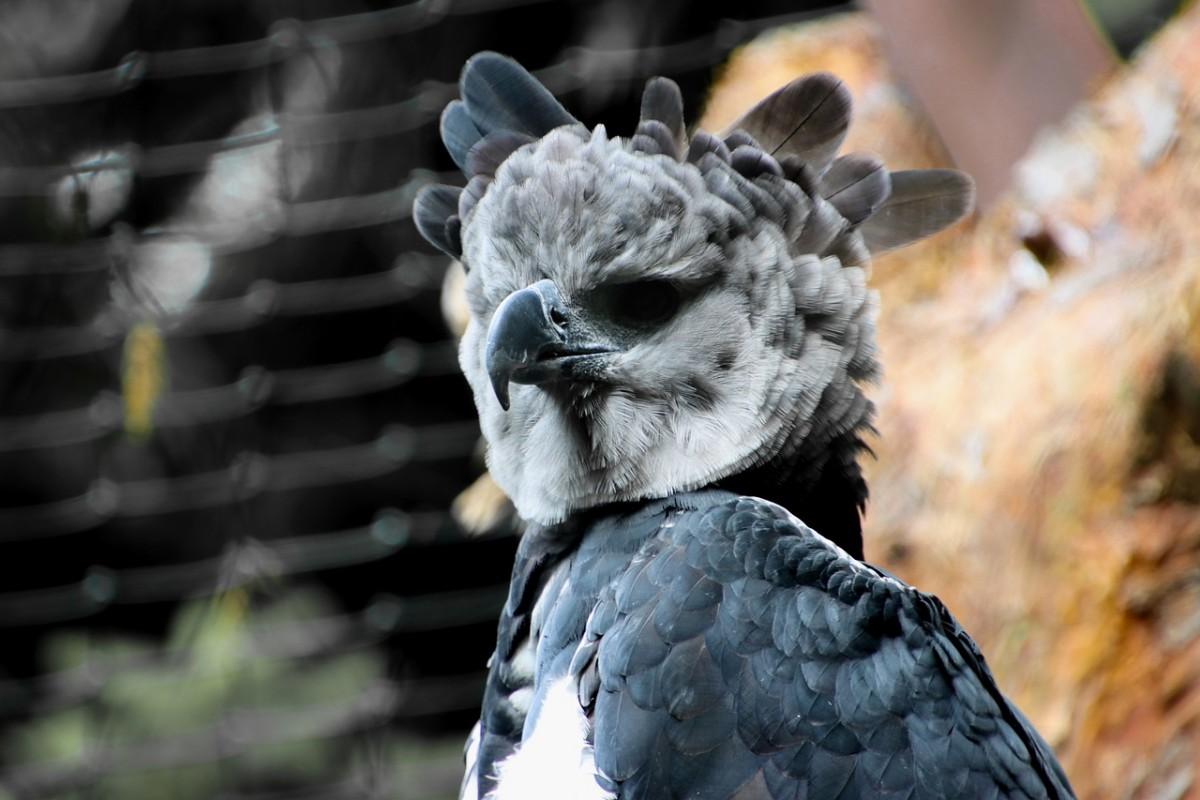
- Name: Harpy eagle
- Scientific name: Harpia harpyja
- Conservation status:
The harpy eagle is a tropical species of eagle. Its other names are the Brazilian harpy eagle and the American harpy eagle. In its area, it is the largest raptor and one of the largest species of eagle in the world.
This eagle is very powerful and is named after the mythological beast harpy. It is an apex predator, even though some specimens were caught by jaguars and ocelots. It mostly preys on tree-dwelling mammals like sloths and monkeys.
12. Hercules beetle
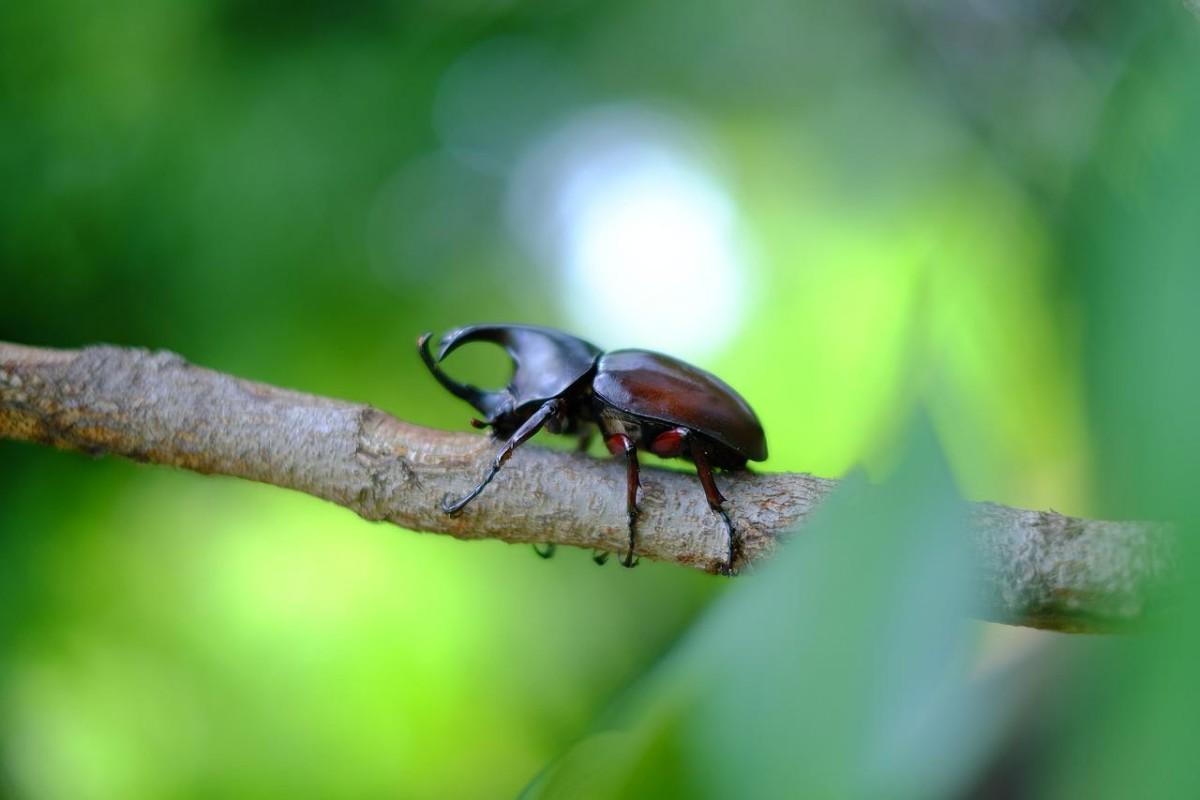
- Name: Hercules beetle
- Scientific name: Dynastes hercules
- Conservation status:
The Hercules beetle is a species of beetle named after Hercules, a famous hero of Greek mythology that is renowned for his strength. It was named this way due to the fact that it can carry up to 850 times its body mass!
It is a nocturnal beetle, and only males have a very long and distinct horn that they use to forage for fruit. They also feed on rotting wood. Males often engage in combat to win mating rights to a female, and most of the time cause significant damage to the combatants… as well as to the female!
13. Cuban tree frog
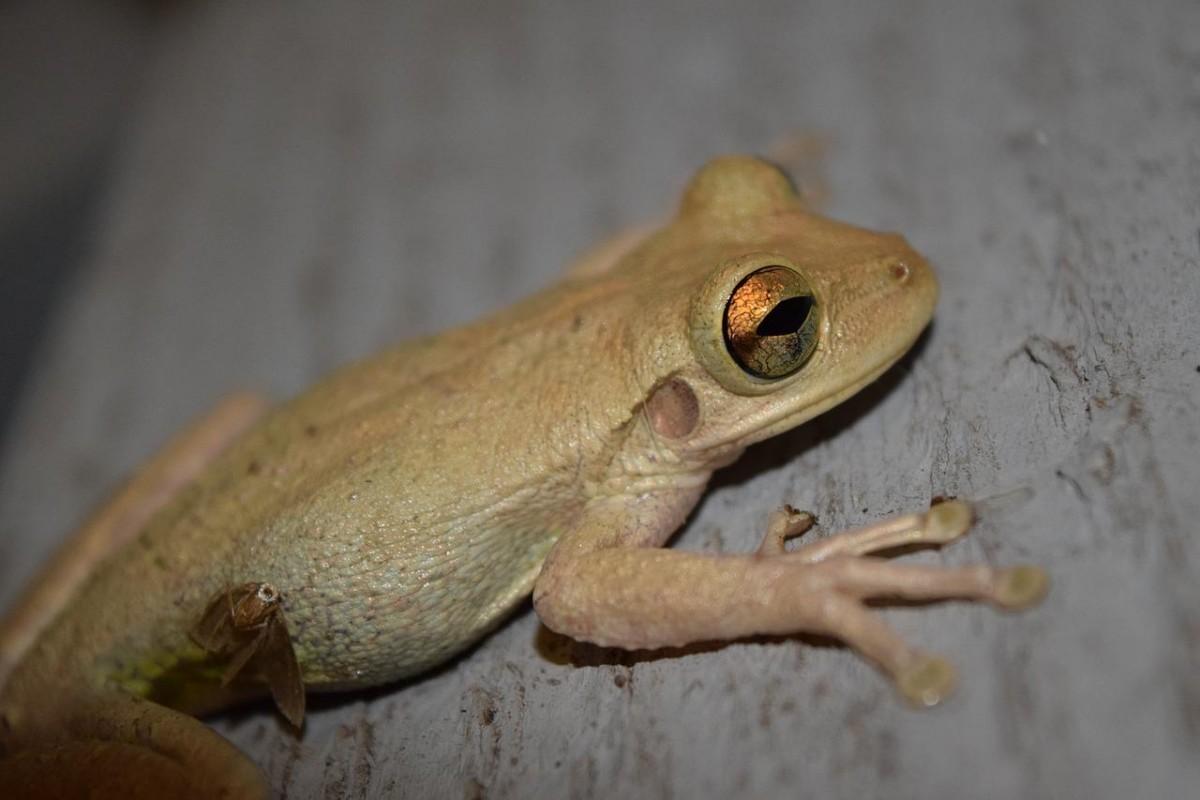
- Name: Cuban tree frog
- Scientific name: Osteopilus septentrionalis
- Conservation status:
Despite its name, the Cuban tree frog can be found throughout most of the Caribbean Islands, as well as in Florida and in Hawaii. It is in fact an invasive species, due to its wide diet and ability to thrive in urban habitats.
The Cuban tree frog is a nocturnal animal, and it eats almost anything that can fit in its mouth, including other frogs! They can also cause costly power outages because of their forage.
14. Nassau grouper
- Name: Nassau grouper
- Scientific name: Epinephelus striatus
- Conservation status:
The Nassau grouper is one of the most important groupers for the commercial fishery in the Caribbean Islands. It is now critically endangered due to overfishing and reef destruction.
This grouper is a medium-sized fish that can grow up to a meter in length and up to 25 kg / 55 lbs. It lives near reefs, usually at a depth of around 100 m / 328 ft, and is a solitary fish that feeds in the daytime.
15. Dwarf seahorse
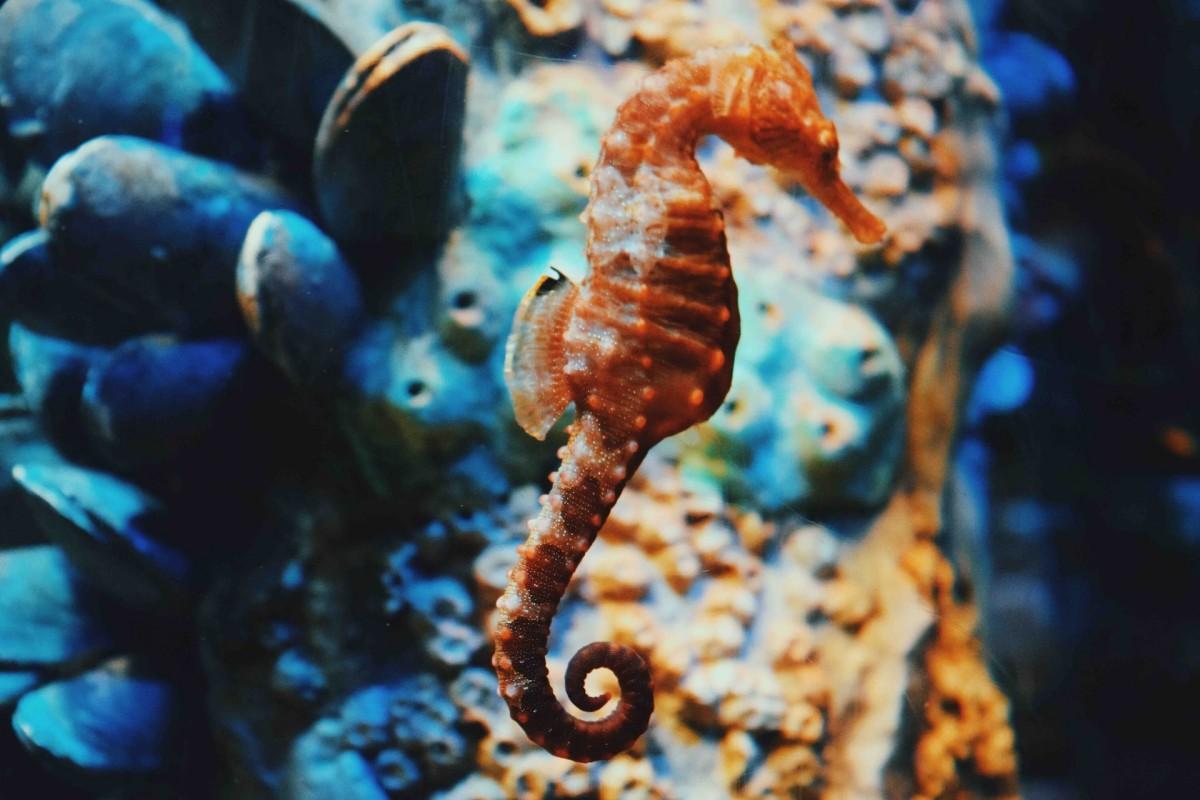
- Name: Dwarf seahorse
- Scientific name: Hippocampus zosterae
- Conservation status:
The dwarf seahorse is a species of seahorse that inhabits the aquatic beds of the Bahamas and of the United States. Sadly, it is threatened by habitat loss, despite its official conservation status. Funnily enough, it is the slowest-moving fish on the planet, with a maximum speed of around 1.5 m / 5 ft per hour!
It feeds on living prey, like small crustaceans and small shrimps, as well as fish fry.
16. Northern jacana
- Name: Northern jacana
- Scientific name: Jacana spinosa
- Conservation status:
The northern jacana is one of the two species of jacanas in South America, the other one being the wattled jacana. It is a wetland bird with peculiar huge feet and claws, which are actually useful to walk on floating vegetation of their favorite habitat: shallow lakes.
I have a fun fact about this bird: this jacana is known as the “Jesus bird” in Jamaica as it appears to walk on water!
17. Bahamian raccoon
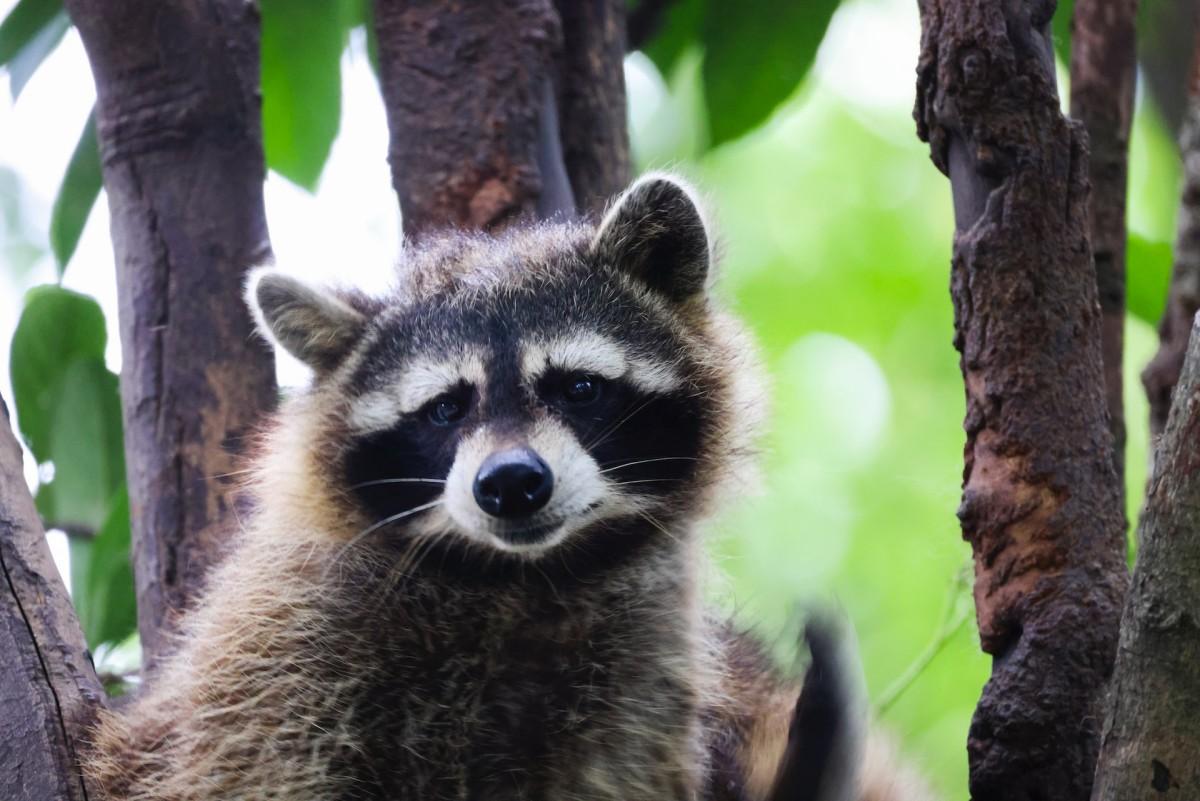
- Name: Bahamian raccoon
- Scientific name: Procyon lotor maynardi
- Conservation status:
The Bahamian raccoon is a raccoon endemic to New Providence Island in the Bahamas. Its scientific name comes from Charles Johnson Maynard, the American naturalist that first described it.
Compared to an average raccoon, the Bahamian raccoon is quite small. This is actually due to insular dwarfism, a process of having a reduced body size due to the population’s range limits. This is quite often the case for insular species, hence its name.
18. Bahamian hutia
- Name: Bahamian hutia
- Scientific name: Geocapromys ingrahami
- Conservation status:
The Bahamian hutia, also known as Ingraham’s hutia, is a species of hutia endemic to the Bahamas. It usually lives in tropical and subtropical moist forests and rocky areas. It is a rodent with a short tail, and its fur varies in color from black to white.
It is a nocturnal animal, and it feeds on leaves, shoots, fruits and nuts, as well as insects and small lizards. It was overall classified as a “peaceful rodent”.
19. Striped Caribbean gecko
- Name: Striped Caribbean gecko
- Scientific name: Aristelliger barbouri
- Conservation status:
The striped Caribbean gecko is a small species of lizard endemic to the Bahamas. Its scientific name comes from American herpetologist Thomas Barbour, who lived during the beginning of the 20th century.
This gecko can only be found on Great Inagua Island, and it lives in shrubland. Its maximum length is 5 cm / 2 in, and its tail is darker than its head and body. It is an oviparous animal, which means its females lay eggs.
20. Bahaman funnel-eared bat
- Name: Bahaman funnel-eared bat
- Scientific name: Chilonatalus tumidifrons
- Conservation status:
The Bahaman funnel-eared bat is yet another animal endemic to the Bahamas. It was discovered in 1903 and is considered near threatened because of its bad habitat circumstances.
Female Bahaman funnel-eared bats gather up in maternity colonies and give birth and care for their offspring, which they carry for around 10 months. The name of this bat comes from its very large ears that allow them to detect very quiet sounds and return echoes as well.
21. Bahamian pygmy boa constrictor
- Name: Bahamian pygmy boa constrictor
- Scientific name: Tropidophis canus
- Conservation status:
The Bahamian pygmy boa constrictor is the last animal on this list, and it is also endemic to the Bahamas, hence its name. It is not venomous, but can still be dangerous due to its constriction.
It is another example of insular dwarfism, as it is relatively small: from 30 cm / 12 in to 60 cm / 24 in. It can change the color of its scales and adapts it to the time of the day to have better camouflage.
—
So there you have them, these were my 21 Bahamas native animals. I hope you enjoyed this list and that you learned something new today.
In case you want to learn more about animals in the country, feel free to keep reading, as I still have lots of things to tell you about:
Endangered Animals of The Bahamas
This is definitely the saddest part of the list, but it is very important to raise awareness. Because of this, let’s go through the list of endangered animals in the Bahamas.
Here are the animals in danger of extinction in the Bahamas.
- Caribbean monk seal
- Brace’s emerald
- Caribbean emerald
- Largetooth sawfish
- Jamaican petrel
- Hawksbill turtle
- Great hammerhead
- Scalloped hammerhead
- and 9 more…
- Basking shark
- Spinetail devil ray
- Whale shark
- Green turtle
- Bermuda petrel
- and 30 more…
To see the full list of endangered species in The Bahamas, head over to the International Union for Conservation of Nature’s Red List.
What are the National Animals of The Bahamas?
The national animals of the Bahamas are the blue marlin and the American flamingo.
The blue marlin, also known as Makaira, is the national fish of the Bahamas. It is a large fish with a sword-like bill. This is why its species is named swordfishes. It is extremely fast and vastly relies on its speed to catch its prey in the water.
The American flamingo is the national bird of the Bahamas. It is also known as the Caribbean flamingo, and it is a large bird with a reddish-pink plumage.
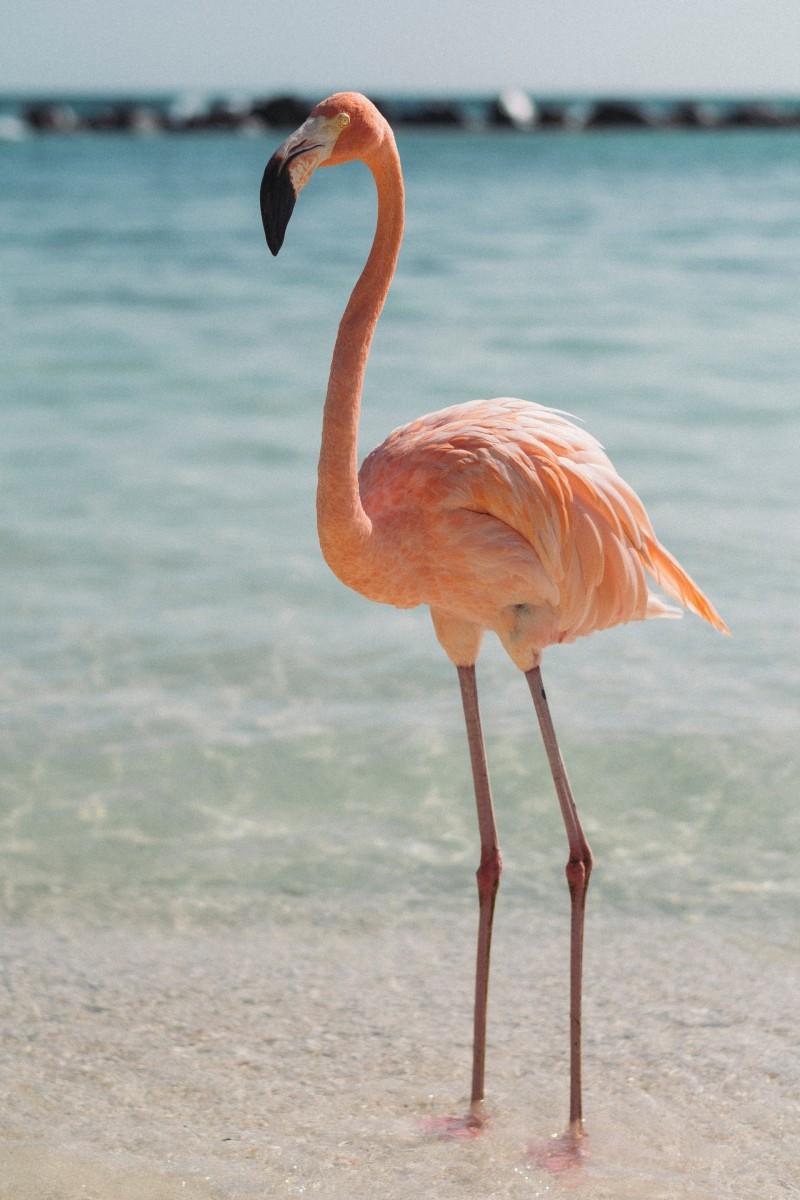
How Many Animals Native to The Bahamas?
What is the diversity of native animals in the Bahamas?
Let’s look at the total number of species of Chordata (mammals, birds, fishes and reptiles).
Total number of animal species in the Bahamas: 1,877 (4,171 in total in the Caribbean islands)
More About Animals in the World!
Loved these Bahamas wildlife facts? Want to see what animals live in other countries?
Then check out these posts:
Or click here to see ALL the facts up on the blog! Spoiler alert: there’s A LOT of them.
Share the knowledge! Click on the buttons below to share information about these animals that live in the Bahamas with your friends, and help them learn more about the world 🙂
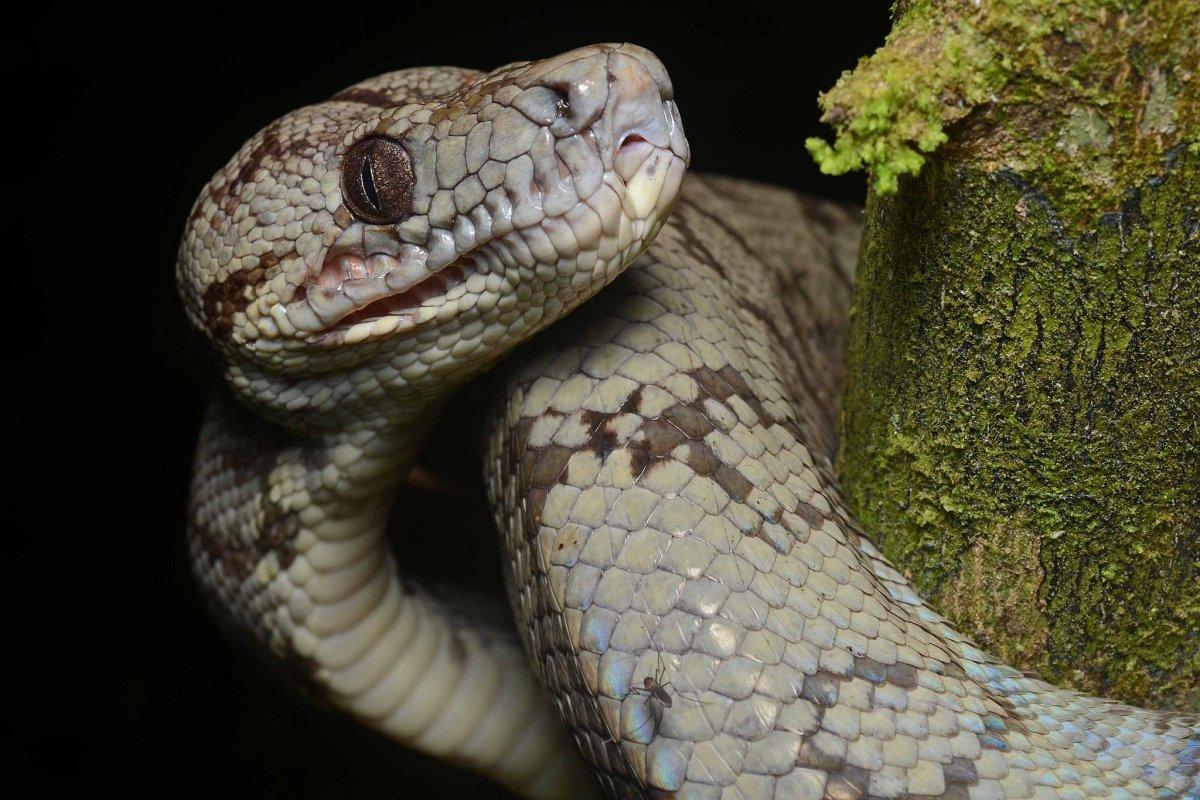
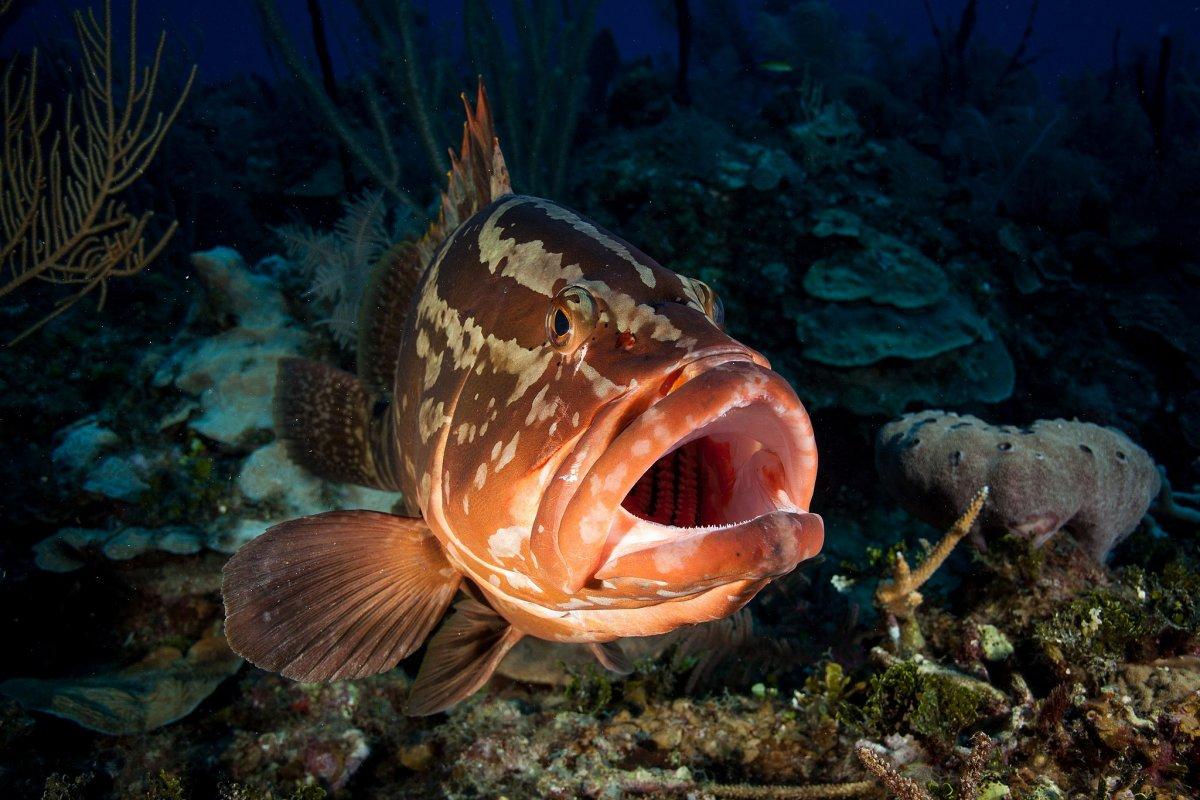
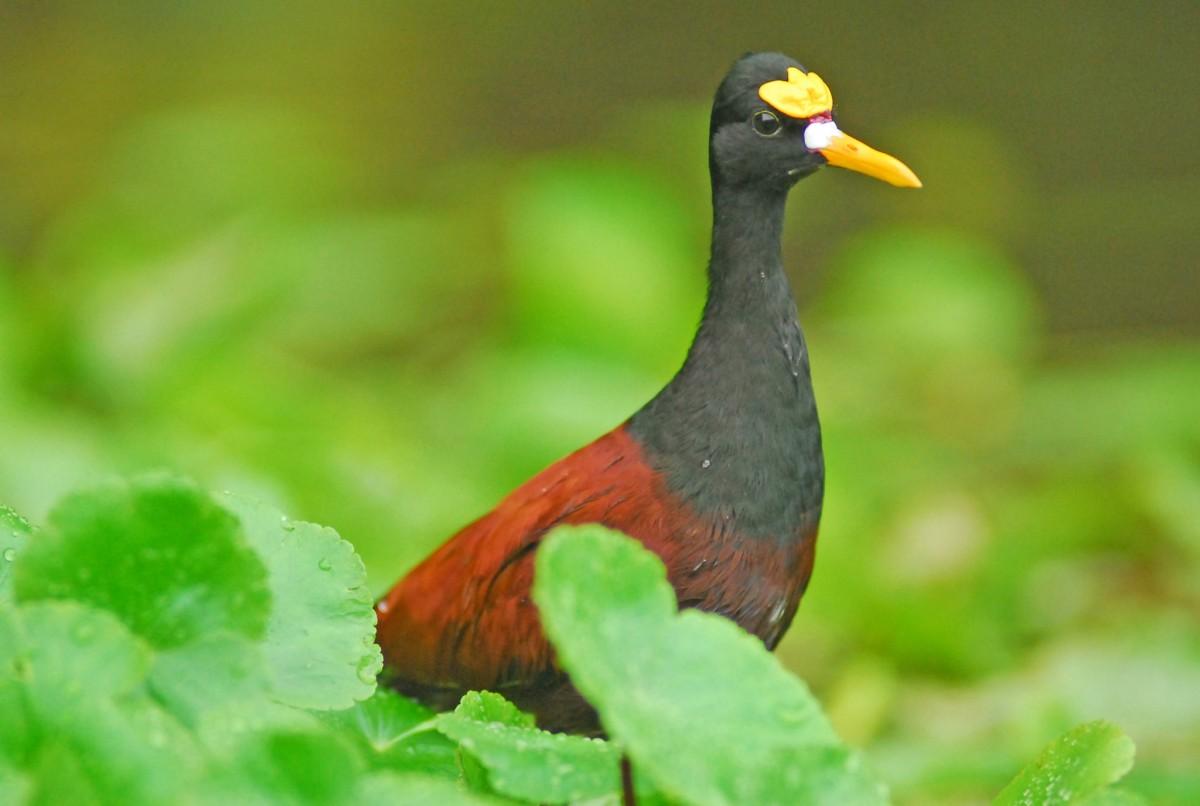
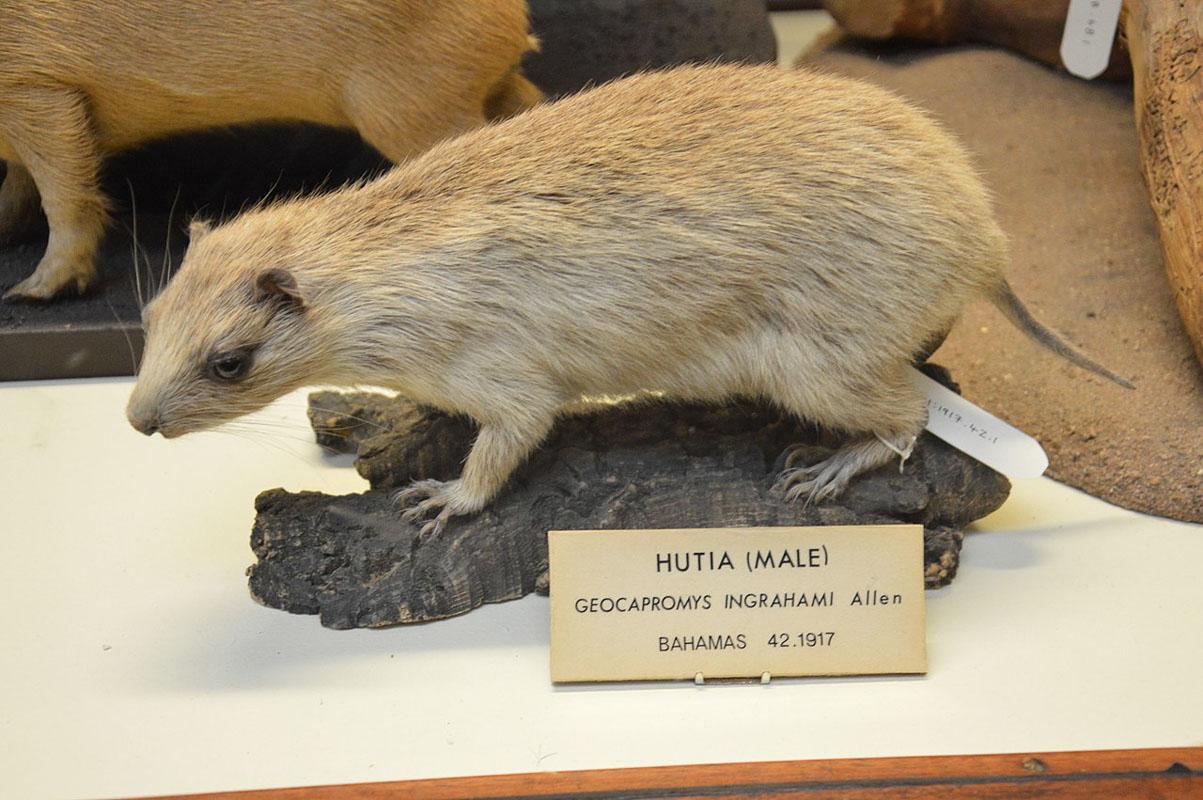

![16 Wild Animals in Belize [Wildlife in Belize]](https://www.kevmrc.com/wp-content/uploads/2022/08/16-wild-animals-in-belize.jpg)
![14 Wild Animals in Alabama [Wildlife in Alabama]](https://www.kevmrc.com/wp-content/uploads/2023/07/14-wild-animals-in-alabama.jpg)
![18 Wild Animals in Qatar [Wildlife in Qatar]](https://www.kevmrc.com/wp-content/uploads/2022/11/18-wild-animals-in-qatar.jpg)